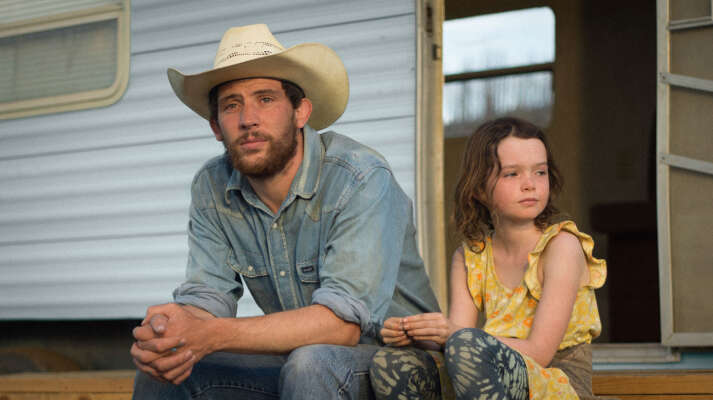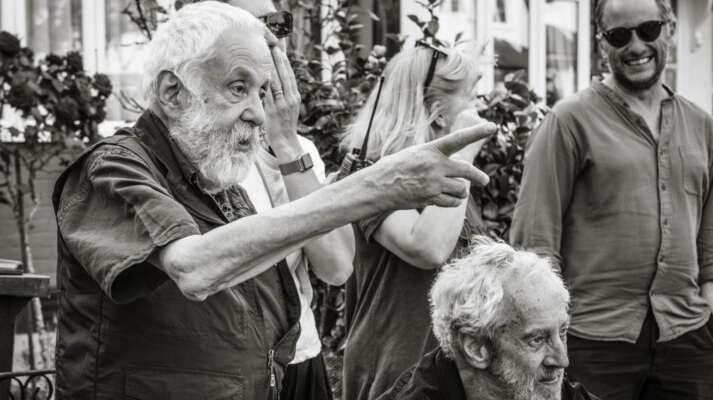Beyond Identity
Disobedience joins a group of contemporary films that go beyond seeing lesbian stories as simply about coming out.
Beyond Identity
Written by Peter Bowen
Based on Naomi Alderman's award-winning novel, Sebastián Lelio's Disobedience maps with empathy and emotion the complex intersection of faith and sexuality. When Ronit (Rachel Weisz), the estranged daughter of a beloved Rabbi, returns to London for her father's funeral, she is reunited with two important figures from her youth: Dovid (Alessandro Nivola) and his wife Esti (Rachel McAdams). When Ronit and Esti meet, they soon rediscover the passionate feelings they had for each other as teens, emotions they feel all the more powerfully as grown women. "This is a love story that explores how their relationships evolve over time, and how their lives are affected by grief," explains Lelio. "At the heart of Disobedience is something very universal." Like many other new films with lesbian characters, Disobedience creates a powerful love story in which the characters' sexuality is a profound truth woven into the fabric of the story, rather than a social issue or a political thesis. We look at other recent stories of women in love who treat their characters as multidimensional human beings.

Pariah | Finding one's path
While interning on Spike Lee's Inside Man, Dee Rees started writing the screenplay that would eventually become her award-winning debut feature Pariah. While the film's title and main characters would stay pretty much the same, Rees would dive deeper into her characters and their motivations over the five years it took to make her feature. Needing to make her NYU thesis film, Rees used her feature-length screenplay's first act as the basis for a short movie, which went on to win awards at festivals around the country. At the invitation of the Sundance Institution, Rees got the opportunity to refine her vision, first at the Screenwriters Lab, then at the Director's Lab the next year. When Pariah debuted as a feature-length film at the Sundance Film Festival, its poignant tale of a 17-year-old Alike (Adepero Oduye) struggling with first love and finding her place in the world, especially as she is pulled in opposite directions by her fiercely out best friend (Pernell Walker) and her staunchly conservative Christian mother (Kim Wayans), was an immediate hit. Mother Jones' Adam Serwer wrote, "Pariah leaves you aching, not only because of the story it tells, but because it whispers softly of all the stories that haven't been told." While Pariah is not autobiographical—Rees grew up in Antioch, Tennessee and came out in her 20s—she is connected to Alike by a yearning to connect. "The universal thing that I give these characters is this struggle to be comfortable in the world," Rees told Filmmaker Magazine. Indeed Alike's fight is not simply to come out, but to find her path—as a poet, a woman, a teenager, an African American, and a lesbian.

Carol | A timeless romance
After the success of her debut thriller Strangers on a Train, Patricia Highsmith decided in 1950 to make her second novel, The Price of Salt, something very personal. The romantic tale of a department store clerk falling for a wealthy married woman with a child was inspired by an incident Highsmith experienced herself working the counters of Bloomingdales two years earlier. The book's positive lesbian love affair proved, however, a bit too personal and polarizing for her agent, who insisted she publish it under the alias Claire Morgan or risk career suicide. In 1997, Phyllis Nagy, with the encouragement of Highsmith herself, adapted the cult classic into a screenplay. After nearly two decades of false starts, Nagy's script finally landed in the hands of Todd Haynes who cast Cate Blanchett and Rooney Mara for the lead roles. For Nagy, what makes Haynes' Carol both contemporary and true to Highsmith's vision is the way the main characters refuse to be confined by their sexuality. "No one frets about being gay; others fret on their behalf," Nagy explains to Vulture. Carol doesn't ignore the very real political and social constraints put on lesbians—and women in general—in the fifties. It simply resists allowing the period's homophobia to dampen its passion. In his Salon review, Andrew O'Hehir suggests that what elevates Carol is that it never asks for your tolerance or sympathy: "It works by seducing you and enrapturing you and enraging you and sweeping you away."

Blue is the Warmest Colour | The many splendored hues of love
When Abdellatif Kechiche's Blue is the Warmest Colour premiered at the 2013 Cannes Film Festival, it ignited a firestorm of acclaim and controversy. Adapted from Julie Maroh's graphic novel, Blue is the Warmest Colour follows the relationship of a student (Adèle Exarchopoulos) with an older painter (Léa Seydoux) as they move from the burning passion of young love to the reality of a long-term relationship. While some critics wrote passionately about the nearly ten-minute-long graphic sex scene in the over 3-hour film, most simply praised the film's beauty and power. IndieWire's Jessica Kiang proclaimed it "the most transportative, truthful and sublime movie experience" of the festival, adding that "It's a film about lesbians, but it's for anyone with a brain and heartbeat and a halfway functional empathy gene." Leading a jury made up of Ang Lee, Nicole Kidman, and others, Steven Spielberg awarded the film the festival's highest honor, the Palme d'Or, for being "a great love story that made all of us feel privileged to be a fly on the wall, to see this story of deep love and deep heartbreak evolve from the beginning." While the film's sex scenes have captivated many, it is, as The Washington Post's Ann Hornaday reminds us, "the myriad otherwise forgotten occurrences that comprise a love affair that, when it inevitably ends, turn out to have been the most important all along."

Appropriate Behavior | Being out and an outsider
For Desiree Akhavan, who wrote, directed, and starred in the break-up comedy Appropriate Behavior, being an outsider is a way of life. "Growing up, I never fit in," Akhavan tells Vanity Fair. For Americans, she was the child of Iranian parents forced to leave their homeland after the 1979 revolution. To her family, she was a struggling bisexual filmmaker. While Appropriate Behavior is not autobiographical, Akhavan used her own experiences as raw material. "As I was writing the script, I was dealing with the aftermath of a breakup and having come out to my family and this was my way of fitting those themes into a feature-length narrative," she told Filmmaker Magazine. When her relationship with her girlfriend Maxine (Rebecca Henderson) ends, Shirin (Akhavan), the child of wealthy Iranian parents, takes a low-paying job teaching filmmaking to Brooklyn children, as well as, of course, stalking her ex. "It introduces a thoroughly modern voice," touts IndieWire for the way it makes its characters more than just the sum of their identity politics. "Appropriate Behavior isn't a narrative about ethnicity or even LGBT struggles in the traditional sense, but rather a means of exploring the problems that result from reinforcing those very barriers," explains Eric Kohn.

Mosquita y Mari | Young love
In making her teen lesbian romance Mosquita y Mari, Aurora Guerrero wanted to return to a point in her life when relationships were based on people rather than socially constructed identities. "I feel like my friendships…were the beginnings of my queer identity, even though I didn't put that label on it," she told PopMatters. In some ways Mosquita y Mari tells a rather classic tale. Yolanda (Fenessa Pineda) is the studious child of Mexican American parents; Mari (Venecia Troncoso) is the rebel who smokes in the school's bathroom and calls her new friend a "mosquita" for the way she looks. When Mosquita agrees to help Mari with her schoolwork, an emotionally engulfing relationship develops, something that goes beyond anything the girls have ever experienced before, or know how to describe. "It is clear that the girls are very much in love with one another," notes Danielle Riendeau in AfterEllen, even as she points out, "The words ‘lesbian' or ‘queer' are never used throughout the movie."


